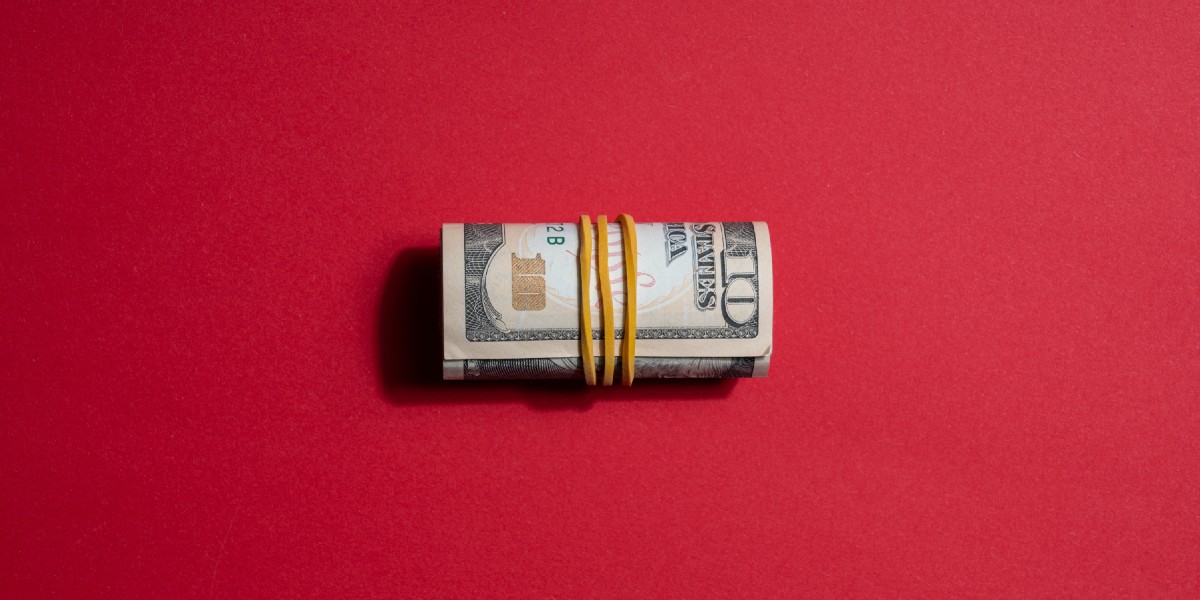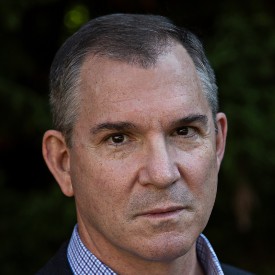Jamila Souffrant is an author and host of the Journey To Launch podcast. She is considered a go-to thought leader in the personal finance field, and her work has been featured on BuzzFeed, ESSENCE, Refinery 29, Money Magazine, CNBC, CBS, Business Insider, and more. The Journey To Launch podcast has over four million total downloads and was listed by the New York Times as a podcast to help you get better with your money.
Below, Jamila shares 5 key insights from her new book, Your Journey to Financial Freedom: A Step-by-Step Guide to Achieving Wealth and Happiness. Listen to the audio version—read by Jamila herself—in the Next Big Idea App.

1. You can achieve financial freedom on the way to financial independence.
You don’t need to be completely debt-free or have millions of dollars to be free. Financial freedom for one person can mean they feel good about their ability to pay their bills on time, and for another person, it can mean they feel secure in having money in their savings account to cover emergencies. I define financial freedom as the ability to have options and control over how you handle your money—so being able to pay your bills, even if you have debt or have money saved for an emergency, means you have achieved some level of financial freedom. Likewise, one person may say “financial independence” and mean they don’t have to depend on anyone else for money.
When I use the term “financially independent,” I mean being independent from anyone and everything, including a job. This means the money you’ve accumulated in your investment accounts can cover your expenses indefinitely. We all have varying levels of how much we’d want to have to feel financially free or financially independent. One person may say they are financially independent once they’ve reached one million invested, and another person may feel that they need three million to be financially independent. One person’s financial independence is another person’s financial “okay.”
Unlike financial independence, financial freedom is not about having all the money you’d ever need again and never having to work. Financial freedom is more about the options you have and the joy it allows you to experience. Day-to-day financial freedom can look like your ability to pay for childcare and go out to eat at your favorite restaurant without going into debt or feeling guilty that you should be doing something else with your money. You have the freedom and flexibility in how you earn and spend your money. Financial freedom is something you can experience on your way to financial independence. The levels of freedom depend on the lifestyle you want to live, and your lifestyle determines the financial threshold you’ll need to achieve. But regardless of your circumstances, there is freedom at every level because you have access to something that you otherwise wouldn’t have had.
2. You need to go through five stages to reach complete financial independence.
The journey to financial independence will feel like a marathon and will take some time. Depending on where you are financially, the pursuit may even feel unfeasible. Just like training for a marathon, achieving financial independence involves breaking the journey into sections. Similar to finding ways to enjoy shorter training runs, it’s important to find ways to enjoy the smaller financial sprints so you can stay motivated and committed to achieving the larger goal.
Let’s go over the five stages:
- The explorer stage. You may feel out of control with your finances and unable to cover your living expenses. Your goal in this stage is to become financially stable. You’ll want to be able to cover your living expenses and minimum debt payments without going deeper into debt.
- The cadet stage. This is where you reach some stability and are now working on becoming consumer debt-free. That means paying off high interest, credit card loans, car loans, and other debt you want included in this stage. I don’t typically include a mortgage or student loans in this stage because they are large sums and will take a while to pay down.
- The aviator stage. You have paid off consumer debt and are now working on becoming financially secure by growing your investments.
- The commander stage. You have achieved a level of work flexibility where working becomes more flexible, and you can take breaks or choose what you do for work. It doesn’t mean you’ll never have to work again for money, but you have more options and flexibility.
- The captain stage. You’ve accumulated enough money and investments never to have to work again if you don’t want to.
The names for the stages keep up with the theme of launching into space. Envision an astronaut preparing to go on their first mission. As they got deeper into their training, they are able to move up in rank. As an explorer, you’re at the beginning of your journey. You’re exploring your surroundings, getting the lay of the land, and reviewing the mission. In this stage, you learn the basics and do the groundwork that will help you throughout your mission’s other stages. It prepares you for the rigorous training ahead. As a cadet, you are at the start of your training where your hands get dirty. This may also feel like the hardest part because it’s the first time you’ve used your mind and body in this capacity. How much do you need to get in shape? Depends on your starting point. Stick with it and get through this stage, and you’ll see why it was all worth it. As an aviator, you’ve gone through the toughest part of your training, but there’s still a lot to learn, including more advanced techniques. As a commander, you learn both the basics and advanced techniques and can apply them to the real world. You are no longer in training and can stare or take control of the rocket yourself. As a captain, you have not only the knowledge but also the experience to lead your own mission. You have full autonomy.
Whether we are aware of it or not, we are all on the financial independence journey. You can unknowingly find yourself at a certain stage of the journey because of past decisions you made, not understanding how they would impact where you are today. Before I knew what financial independence was, I knew money was important, and I wanted enough to live happily and be stable. The younger I was, the more hopeful and ambitious I was with what I wanted for my life. Because of my ambitions, I did make some sound financial decisions that helped give me a head start when I intentionally started my journey.
The length of time you take to get through each stage depends on money. The length of time it takes you to get through each stage depends on many factors. It depends on your previous choices, the current components of your financial independence formula, your income, expenses, mindset, habits, desired objectives, and external factors beyond your influence. External factors, like market emergencies or life changes, can cause you to pivot.
Don’t compare yourself to other people. What matters is where you are starting and understanding that there is a level of freedom in each stage. Each debt paid off matters and every hundred dollars invested matters. It unlocks a different level of freedom for you. That freedom can look like fewer obligations, more power over where your dollars go, and the ability to say no to jobs or walk away because you have more autonomy than you did before.
3. There are five guacamole levels of lifestyle that help you identify the type of lifestyle you want and how much it will take to reach financial independence.
In order to help you identify your desired level of lifestyle and spending and how it compares to the way you live and spend now, I’ve come up with something called guacamole levels (or guac levels for short). Can you tell how much I love guacamole? If you hate guacamole, feel free to replace it with your favorite treat.
The guac levels go from one to five, one being the least fanciness and five being the highest indulgence. By asking a question about a simple lifestyle choice—do you order the guacamole or not?—you can determine what lifestyle level of financial freedom you want. The higher your lifestyle needs, or guac level, the more money you’ll need to become financially independent.
Let’s go over the guac levels one by one. Guac level one is characterized by having no extras. Your focus is on financial independence, and you prioritize your baseline and mandatory expenses like housing, transportation, and groceries. To survive, you live a traditionally frugal lifestyle and rarely indulge in anything beyond your basic needs.
“The higher your lifestyle needs, or guac level, the more money you’ll need to become financially independent.”
Level two has occasional extras. You may indulge in something like eating out or ordering guacamole, but only on special occasions or when a good discount is available. Extras like these are considered significant expenses and you would not indulge in them regularly.
Guac level three is where you indulge in extras like eating out or ordering guacamole more frequently because you enjoy them and consider them a source of luxury in your life. You have designated a budget to cover such expenses, which are regular parts of your routine guac.
Level four is where you can have extras whenever you want, regardless of the price. You are willing to pay a premium for high-quality luxury experiences, including expensive appetizers like guacamole. Money is not a significant barrier for you, and you can indulge in extras regularly without being too concerned with fitting them into your budget. You would pay $19 for fresh guacamole made with organic ingredients at the table, just like you would pay for first-class flights.
Level five is the ultimate level of luxury, where you have your own chef in-house to make authentic guacamole whenever you want. At this level, you can indulge in anything you desire, including daily tubs of guacamole. You are a total baller, own your private jet, are on the top of the financial ladder, and have the ability to enjoy life’s pleasures without any restrictions.
Admittedly, it’s possible to reach financial independence goals faster by eliminating extras like appetizers. However, I find it less appealing to do that. Every decision comes with trade-offs, which is the opportunity cost of relinquishing your desire to attain another, so what’s your desired guac lifestyle level?
4. There are six essential components to work on to reach financial independence or any financial goals you’ve set for yourself.
This is called the financial independence formula (FI formula). The six components you’ll need to understand are income, expenses, liabilities, assets, mindset, and habits. The first four—income, expenses, liabilities, and assets—capture all the quantifiable and tangible things you need to focus on with your money to reach your financial and lifestyle goals. The last two components—mindset and habits—are more intangible and can’t always be measured in numbers, but they still impact your journey’s length of time and quality and happiness.
“Reaching financial independence requires a holistic approach that involves looking at all six components.”
All six components have their own goals. You want to improve your mindset and habits, increase your income, optimize your expenses, reduce your liabilities, and grow your assets. It’s crucial for anyone who wants to achieve their financial and lifestyle goals. By paying attention to these four components, you can make informed decisions about how you allocate your resources. Income is the inflow of money and cash from your job, businesses, or investments. Expenses are the outflow of money and cash directed to needs. Liabilities are things you owe, credit card debt, student loans, and personal loans. Assets are things you own.
The two intangible components make the tangible components doable. Your mindset is how you view the world, your thoughts, and your internal setpoint that guides you to see things in how you view and interpret events. Your habits are the things you do consistently, the rituals and routines that help you on your financial journey. Reaching financial independence requires a holistic approach that involves looking at all six components. They all work together like a foundation of a house that can withstand external factors to allow you to succeed on your financial freedom and independence journey.
5. The journey to financial independence is as much an internal one as an external one.
The real benefit of pursuing financial independence is not in the accumulation of assets and the growth of your accounts, but rather, it’s what you gain and who you become. While you are on your way to financial independence, you have to learn to enjoy and revel in the skills, confidence, and resilience that transform you more than any number can. The money and economic gains that you receive will enhance your journey, but that can come and go. Your accounts may fluctuate with changes in interest rates, news events, and other external things, but who you become can’t be diminished or taken from you. That is the real power and freedom that come with the journey towards financial security.
You can begin to find enjoyment and fulfillment in your life regardless of your current financial situation. The journey to financial independence is as much an internal journey as an external one. Acknowledging and appreciating the freedom you get on the journey at every stage is more important than what stage you’re in or how far you are away from financial independence. The happiness we have in our lives is ultimately based on our internal perspective and not how many zeros are on our bank statements.
To listen to the audio version read by author Jamila Souffrant, download the Next Big Idea App today:
































